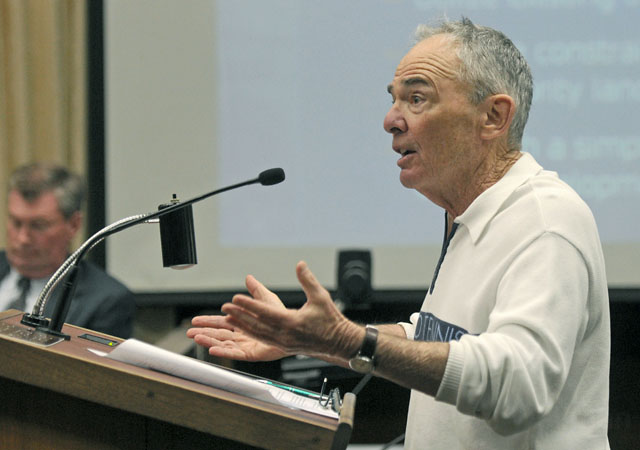Downtown Core Strengthening
New Rules Discourage Commercial Growth in Outlying Neighborhoods

With surprisingly mild opposition from Santa Barbara’s development community, the City Council unanimously embraced broad new rules restricting how much new commercial expansion can take place over the next 20 years, cutting by half the amount that’s been allowed over the past two decades. In addition, the council adopted far-reaching planning guidelines that will direct much of that development into the city’s downtown area while discouraging such growth in outlying neighborhoods.
The new rules will give city planners greater latitude in green-lighting downtown commercial projects, while making it harder to approve new development — or additions in excess of 1,000 square feet — on outer State Street, the Mesa, the Riviera, or Coast Village Road. Developers, attorneys, and land-use agents with interests in those areas argued the council should provide greater flexibility to allow such economic expansion, but the councilmembers remained unswayed. The key issue driving the debate was traffic congestion. Because the downtown street grid can accommodate far more traffic without adverse impact, the council majority insisted downtown was the proper venue for such growth.
The guidelines replace the city’s commercial development restrictions first adopted by a popular vote in 1989 in what was known as Measure E, which at the time of passage was a bitterly contentious and politically polarizing issue. Measure E sought to limit new growth in order to limit the number of new jobs created. And that was done to reduce the demand placed by new workers — attracted by those jobs — on the city’s obviously limited housing supply. It called for the development of no more than 3 million square feet of new commercial space over the next 20 years, but the real hammer lay in the traffic restrictions Measure E imposed. Under the terms of Measure E, new projects could be approved only if they did not adversely affect the level of service at a single intersection. Given the large number of subpar intersections throughout the city, this effectively killed numerous proposals before they ever got off the drawing boards.
Under the new rules adopted by the council Tuesday, only 1.35 million new square feet of commercial development can be allowed in the next 20 years. While that’s less than half of what Measure E permitted, it’s about the same amount that has actually been approved since Measure E was adopted. And exceptions can be made, as they were under Measure E, for projects deemed to be of “community benefit,” such as a new medical clinic, a school, or a museum. With the new guidelines, however, city planners will calculate traffic impacts differently, effectively allowing projects that otherwise might not have been previously approvable, so long as they’re located downtown and are officially deemed to be “of community benefit.” That same degree of latitude, however, does not exist for projects proposed elsewhere throughout the city. Traffic engineers argue that city streets in those neighborhoods can’t accommodate the same volume of traffic with nearly the same degree of efficiency as the downtown grid.
The new rules also impose tighter restrictions on the transfer of development rights from one property to the next, a bureaucratically arcane but strategically key tool for those in the land-use business. Now, development rights can no longer be transferred from downtown properties to parcels located in outlying neighborhoods — as happened with the new El Encanto Hotel, which is about to open. Instead, transfers will be allowed to take place within any of the city’s five new designated zones or from any of the outlying zones to the downtown core.
In years past, the changes might well have occasioned a knockdown fight among the council’s rival camps. But the new policies were hammered out in no fewer than four Planning Commission hearings and had been at the heart of two years of intense debate during the city’s painfully prolonged general plan update process.



